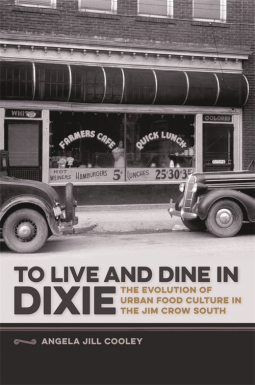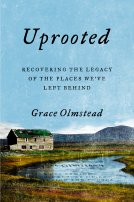
To Live and Dine in Dixie
The Evolution of Urban Food Culture in the Jim Crow South
by Angela Jill Cooley
This title was previously available on NetGalley and is now archived.
Send NetGalley books directly to your Kindle or Kindle app
1
To read on a Kindle or Kindle app, please add kindle@netgalley.com as an approved email address to receive files in your Amazon account. Click here for step-by-step instructions.
2
Also find your Kindle email address within your Amazon account, and enter it here.
Pub Date May 15 2015 | Archive Date May 04 2015
Description
This book explores the changing food culture of the urban American South during the Jim Crow era by examining how race, ethnicity, class, and gender contributed to the development and maintenance of racial segregation in public eating places. Focusing primarily on the 1900s to the 1960s, Angela Jill Cooley identifies the cultural differences between activists who saw public eating places like urban lunch counters as sites of political participation and believed access to such spaces a right of citizenship, and white supremacists who interpreted desegregation as a challenge to property rights and advocated local control over racial issues.
Significant legal changes occurred across this period as the federal government sided at first with the white supremacists but later supported the unprecedented progress of the Civil Rights Act of 1964, which—among other things—required desegregation of the nation’s restaurants. Because the culture of white supremacy that contributed to racial segregation in public accommodations began in the white southern home, Cooley also explores domestic eating practices in nascent southern cities and reveals how the most private of activities—cooking and dining— became a cause for public concern from the meeting rooms of local women’s clubs to the halls of the U.S. Congress.
A Note From the Publisher
Part of the Southern Foodways Alliance Studies in Culture, People, and Place series
Part of the Southern Foodways Alliance Studies in Culture, People, and Place series
Part of the Southern Foodways Alliance Studies in Culture, People, and Place series
Advance Praise
“I cannot overstate how useful it is that Cooley
is trained both as a cultural historian and as a lawyer. The richness of
analysis in To Live and Dine in Dixie comes from the interplay of methodologies from both fields. Few other scholars can bring such research tools to the subject.”
—Elizabeth Engelhardt, author of A Mess of Greens: Southern Gender and Southern Food
“To Live and Dine in Dixie is an important addition to the canon of southern history and food studies.”
—Marcie Cohen Ferris, author of The Edible South: The Power of Food and the Making of an American Region
Marketing Plan
No Marketing Info Available
No Marketing Info Available
Available Editions
| EDITION | Other Format |
| ISBN | 9780820347592 |
| PRICE | $24.95 (USD) |








